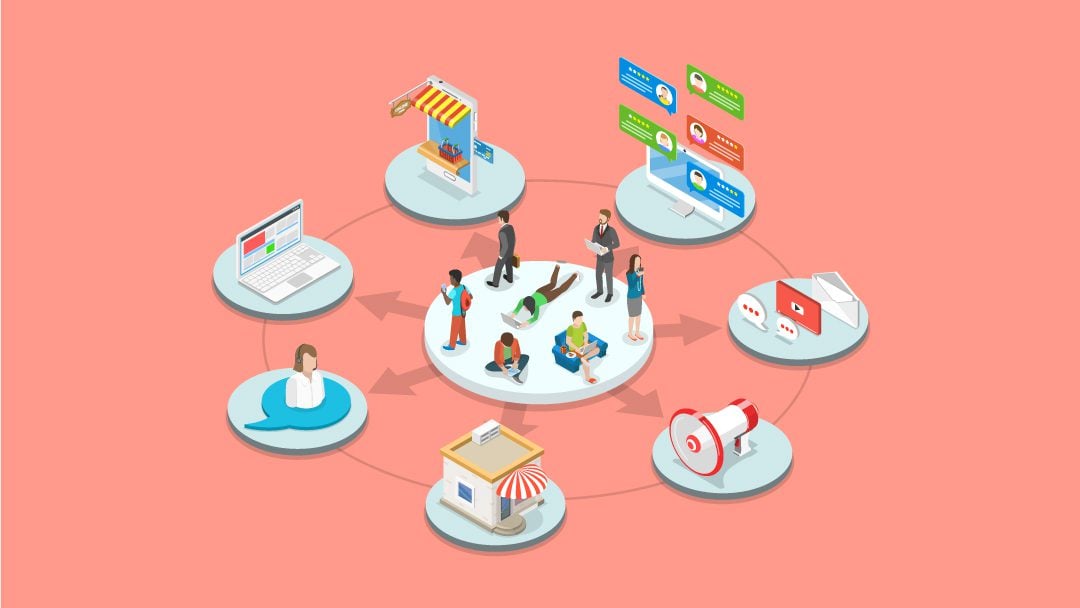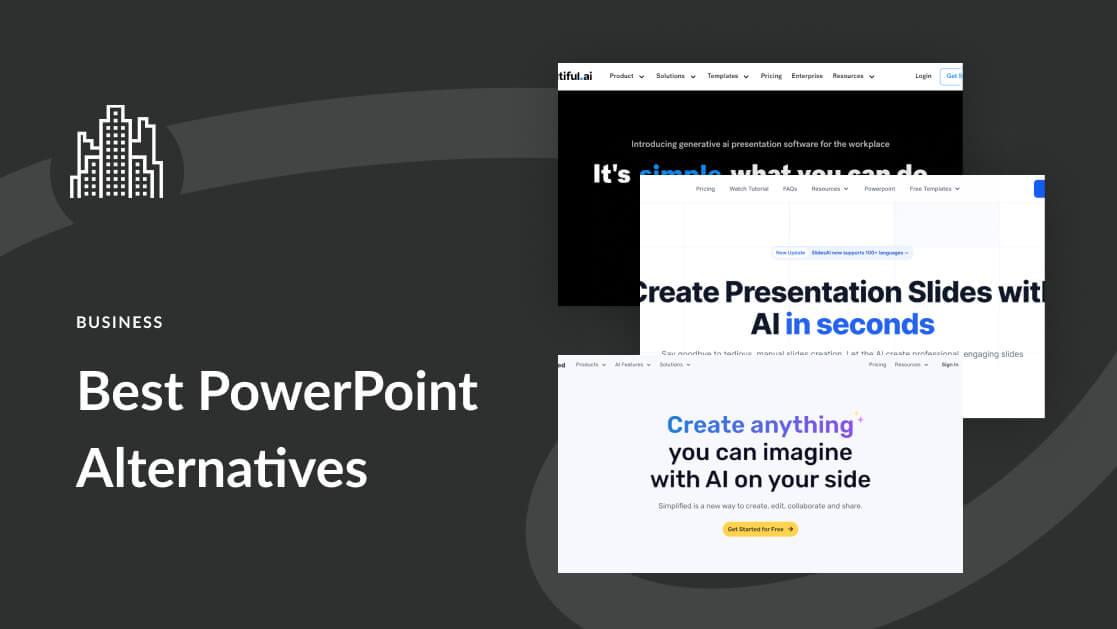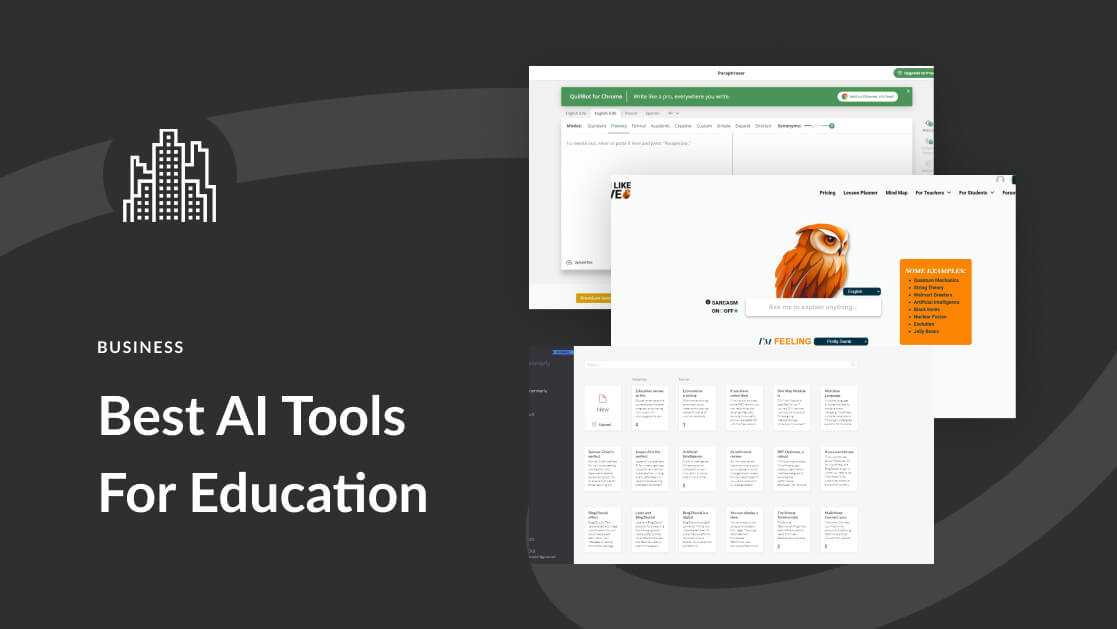When it comes to marketing efforts, every company has its own approach. In email newsletters and on roadside billboards, brands send messages to their customers.
Most brands use multichannel marketing to connect with their client base and others use omnichannel marketing. In this post, we’ll look at the basics of omnichannel marketing and how you can incorporate it into your own marketing tactics.
- 1 What is Omnichannel Marketing
- 2 The Difference Between Multichannel Marketing and Omnichannel Marketing
- 3 What are the Benefits of Omnichannel Marketing?
- 4 Examples of Brands Using Omnichannel Marketing
- 5 How to Get Started With Omnichannel Marketing
- 6 The Marketing Team is The Backbone of Omnichannel Marketing
- 7 Conclusion
What is Omnichannel Marketing
To define omnichannel marketing, we have to briefly look at multichannel marketing.
Multichannel marketing is when a company connects with its users through a variety of channels. For example, their website, printed catalogs, a mobile app, a local store. Each channel has its own system. A marketing team might even have mini-teams for each specific channel.
In multichannel marketing, users interact with each channel in a direct way but there is no latent connection between channels. For example, a user sees a brochure with the website URL printed on it. The user has to copy the URL into their phone and the site might not even have the visuals that the brochure did.
This same situation in an omnichannel marketing approach would be a little different. The brochure would have a scannable QR code. The user scans the code and is taken to a landing page that is visually similar to the brochure. They are offered a discount when using that same brochure in the store. They can either show the brochure and a personalized code in the physical store or use a discount code in the online store.
The Difference Between Multichannel Marketing and Omnichannel Marketing
The main difference between multichannel and omnichannel marketing is the role of the user. In multichannel marketing, the user connects with the brand’s marketing channels in different situations. Every step of the way during the customer’s journey is ruled by choice. The user chooses how to buy according to the choices which the company has laid out before them.
In omnichannel marketing, the user is the center of attention at every level. The channels work in unison to give the user the best experience possible. It’s all about a “seamless” experience. Omnichannel marketing is about collecting data from each user and personalizing their experience through all the channels.
One of the most basic omnichannel marketing tactics is the email a customer receives after they abandon a full cart in an online store. Even further, if the user signed on with their Facebook account, they might receive a discount code for that abandoned cart via FB messenger. And of course, they will see ads for those same products while they are spending time online doing other things.
What are the Benefits of Omnichannel Marketing?
As we have seen above, omnichannel marketing is all about seamless user experience. The data collected from each user’s buyer journey is the key to keeping them interested throughout the process. By creating personalized interaction, they feel seen and understood.
This leads to a certain sense of comfort and brand loyalty. Ultimately leading to easy, seamless sales. When a user knows that they can count on a brand to make it easy for them, they will come back for more, every time.
With omnichannel marketing, a company can link its offline and online spaces. Blurring the lines between online and offline is what makes omnichannel marketing so successful. Users spend hours of the day on their devices, but they also have real offline lives. Omnichannel marketing supports them in all spaces.
The benefits of omnichannel marketing are:
- Seamless customer experiences at every step of the journey
- A higher sense of brand loyalty and confidence
- Less abandoned carts in online stores
- Online and offline integration for easier consumption
Examples of Brands Using Omnichannel Marketing
Let’s look at a couple of brands that are using omnichannel marketing to their advantage. If you are thinking of incorporating omnichannel marketing in your company, look closely at how these companies do it by actually entering their system. Don’t be surprised if you end up buying something.
IKEA
The omnichannel marketing experience at IKEA has been evolving over the years. This year it will reach higher proportions. The new IKEA mobile app will be the center of all connections between the user, their home and the physical store. Clients will even be able to order furniture from their phones.
IKEA apps used to have different purposes. At home, clients could use augmented reality to see how specific furniture will look in their homes.
In the store, clients use another app to create a shopping list as they wander the showrooms. The app then tells them where to find the products they want to buy in the storeroom.
The new app will integrate everything for an even more seamless experience.
NIKE
Nike’s omnichannel experience has been around since 2006 with the introduction of Nike+. Nike+ was Nike’s first system to recover data from their shoes as they were being used. Users connected their sneakers to an iPod (now to the iPhone and iWatch) and could then see how long they had run, at what speed, etc.
Nike+ is now a giant entity in the Nike universe. It’s present in the shoes, in the apps and devices, in the online and physical stores. Users receive content tailored specially for them according to the data their app collects. From their athletic activities to their Nike shopping sprees.
How to Get Started With Omnichannel Marketing
When choosing to apply an omnichannel marketing strategy to a company, the first and most important aspect to consider is the user. Everything must be tailored and adjusted for the user/customer. You need a system to collect their data and segment them into relevant groups for further contact.
The first and easiest step is to have a top-notch email marketing system in place. Email needs to be tailored to the data which comes from the online site and from purchases in physical stores. Omnichannel marketing is not so much about sending customers on email funnels but more about taking their hand towards a seamless result of what they want.
Another important tool for omnichannel marketing is an app that can blur the lines between offline and online. Use the app to help users navigate physical stores, providing info on the products they are interested in.
Let them know via the app if there are other colors in the outfit they are trying on so they don’t have to leave the changing room to find it. Incorporate augmented reality mirrors for trying on different outfits.
These are just a few ideas, your brand is unique and the tactics you use must represent that.
The Marketing Team is The Backbone of Omnichannel Marketing
In order to run a successful omnichannel marketing strategy, everyone on the marketing team must be on the same page. The social media team and mobile app team cannot be working on different things, they need to work together. The same applies to the email team and the e-commerce developers.
You need to create a brand message guide for everyone to use seamlessly. For an omnichannel marketing strategy, a design system will be more suited than a static brand style guide. Everyone on the team needs to know what’s going on in every channel. Data from the users must be used to personalize and segment all the actions taken to connect with them.
Invest in omnichannel marketing training for your team if you feel they need to catch up with the technique and the tactics.
Conclusion
As you can see, omnichannel marketing can take your marketing to the next level. If you are already using multichannel marketing, you just need to unify your efforts and help your team reach a higher goal.
Always remember, the user is the most important aspect of this strategy. Don’t spam them, help them. Don’t force them to buy something, entice them. Give them what they want so they will feel like they can trust you and your company.
If you’re interested in taking your omnichannel marketing efforts to the next level, be sure to check out our post on the best marketing plugins for WordPress. These plugins are specifically designed to help you streamline and optimize your marketing campaigns, making it easier to reach your target audience and achieve your goals.
In this post, we looked at what omnichannel marketing is all about and how it can help skyrocket your brand. We hope you learned a thing or two. Let us know in the comments.
Featured image via TarikVision / shutterstock.com









Leave A Reply